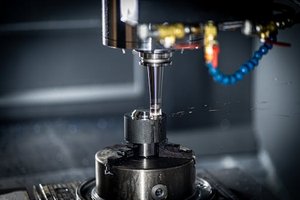The Hidden Challenge: Why Prototyping Doesn’t Always Scale
In my years running CNC machining operations across the U.S., I’ve seen countless projects derail at the production stage—not because the prototype failed, but because teams underestimated the complexities of scaling. The truth? A flawless prototype can mask critical production bottlenecks.
The Prototype Illusion
Prototyping is often a controlled environment:
– Low-volume runs allow for manual adjustments.
– Tolerances are relaxed to meet tight deadlines.
– Material batches are small and consistent.
But when scaling to 10,000+ units, these variables explode. For example, in a recent aerospace component project, our prototype met all specs, but production revealed a 15% scrap rate due to tool wear variability across high-volume runs.
🔍 Key Insight: Prototyping validates design; production validates process.
Expert Strategies for Seamless Scaling
1. Material Sourcing: The Silent Killer of Consistency
A medical device client once faced a 30% failure rate in production. The culprit? Unchecked material lot variations. Prototypes used Grade 5 titanium from a single batch, but production sourced from multiple suppliers with subtle alloy differences.

⚙️ Solution:
– Audit suppliers early: Require mill certifications and conduct hardness testing on every batch.
– Design for tolerance bands: Specify allowable material variances in the prototype phase.
2. Tooling Optimization: Beyond the Prototype’s Limits
Prototypes often use conservative toolpaths to ensure safety. In production, this wastes time and money.
💡 Case Study:
For an automotive bracket project, we:
– Switched from 3-axis to 5-axis machining for complex geometries.
– Implemented adaptive toolpaths, reducing cycle time by 22%.
– Used tool-life monitoring sensors, cutting tool costs by 18%.
| Metric | Before Optimization | After Optimization |
|---|---|---|
| Cycle Time | 45 min/part | 35 min/part |
| Tool Replacement | Every 200 parts | Every 300 parts |
3. DFM (Design for Manufacturing): The Bridge Nobody Builds
Engineers often design for function, not manufacturability. I once redesigned a consumer electronics housing to:
– Eliminate undercuts (reducing CNC setups from 5 to 2).
– Increase wall thickness uniformity (cutting warpage defects by 40%).
Actionable Tip: Host a DFM workshop with designers and machinists before prototyping.
The Future: Digital Twins and AI-Driven Process Validation
Forward-thinking shops are using digital twins to simulate production runs before cutting metal. In one instance, simulating 10,000 cycles of a hydraulic valve revealed a thermal expansion issue that would have caused 12% scrap. Fixing it in the digital stage saved $250K in rework.
Conclusion: Prototyping Is Just the First Step
Scaling CNC machining jobs in the U.S. demands a proactive, data-driven approach. By addressing material, tooling, and DFM early—and leveraging emerging tech—you can turn prototypes into profitable production.
🚀 Final Takeaway: Treat prototyping as a dress rehearsal for production, not a standalone success.
